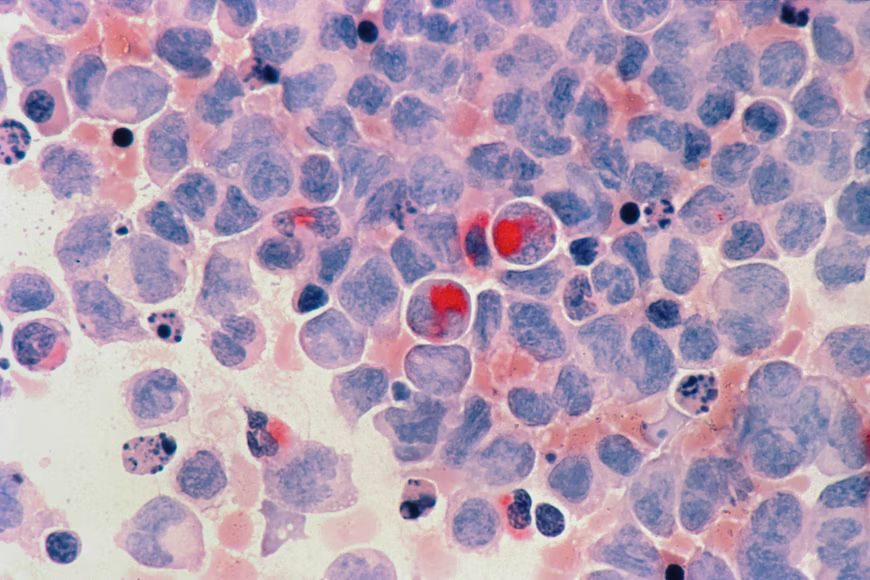Chicago White Sox closer Liam Hendriks announced Sunday that he has been diagnosed with Non-Hodgkin’s lymphoma
“Hearing the word “cancer” came as a shock to my wife and I, as it does to millions of families each year. However, I am resolved to embrace the fight and overcome this new challenge with the same determination I have used when facing other obstacles in my life,” the 33-year-old wrote on his social media account.
“… I am confident that I will make a full recovery and be back on the mound as soon as possible,” Hendriks wrote on Instagram. “I know with the support of my wife, my family, my teammates and the Chicago White Sox organization, along with the treatment and care from my doctors, I will get through this.”
What is non-Hodgkin’s lymphoma?
A form of cancer known as non-Hodgkin’s lymphoma develops in the lymphatic system, which is a component of the body’s immune system that fights infection. White blood cells called lymphocytes can develop tumours (growths) throughout the body when non-Hodgkin’s lymphoma is present.
A general classification of lymphoma is non-Hodgkin’s lymphoma. This category includes a wide variety of subtypes. Among the most prevalent subtypes are follicular lymphoma and diffuse large B-cell lymphoma. Hodgkin’s lymphoma is the second broad classification of lymphoma.
Also read: What is ACI? Autologous Chondrocyte Implantation
The prognosis for those who have non-Hodgkin’s lymphoma has improved as a result of improvements in diagnosis and therapy.
Non-Hodgkin’s lymphoma symptoms and signs can include:
Swollen lymph nodes in your neck, armpits, or groin
Abdominal pain or swelling
Chest pain, coughing, or trouble breathing
Persistent fatigue
Fever
Night sweats
Unexplained weight loss
Causes
Most of the time, medical professionals are unsure of what causes non-Hodgkin’s lymphoma. It starts when one’s body makes an excessive number of aberrant lymphocytes, a category of white blood cells.
Lymphocytes typically follow a predictable life cycle. Your body produces new lymphocytes to replace old ones as they expire. Your lymphocytes do not expire in non-Hodgkin lymphoma, and your body continues to produce new ones. Your lymph nodes enlarge as a result of the excess lymphocytes cramming them inside.
Also read: Djokovic to skip US Open because he can’t travel to States unvaccinated
Non-Hodgkin lymphoma typically starts in the:
B cells and T cells
A particular class of lymphocyte known as the B cell makes antibodies to ward off foreign invaders and combat infection. B cells are the primary source of non-Hodgkin’s lymphoma. Diffuse large B-cell lymphoma, follicular lymphoma, mantle cell lymphoma, and Burkitt lymphoma are B cell-related subtypes of non-Hodgkin’s lymphoma.
A particular class of lymphocyte known as T cells is responsible for directly eradicating foreign invaders. In T cells, non-Hodgkin’s lymphoma develops significantly less frequently. Peripheral T-cell lymphoma and cutaneous T-cell lymphoma are non-lymphoma Hodgkin’s subtypes that contain T cells.
Also read: Tomato flu in India: What experts are saying about the outbreak
Whether the non-Hodgkin’s lymphoma’s origin in B cells or T cells—helps to guide the kind of treatments one can choose from.
Areas where non-Hodgkin’s lymphoma occurs
Typically, Non-Hodgkin lymphoma involves malignant cells in your lymph nodes. However, the illness can also extend to other lymphatic system organs. The lymphatic system, tonsils, adenoids, spleen, thymus, and bone marrow are a few of these. Non-Hodgkin lymphoma can occasionally affect organs that are not connected to your lymphatic system.
Risk elements
The majority of non-Hodgkin’s lymphoma patients lack any readily apparent risk factors. Additionally, a lot of people who are at risk for the disease never get it.
Also read: The end of COVID? Scientists find a key weakness in all variants
Non-lymphoma Hodgkin’s risk factors include the following:
Immune system suppressing medications. You may be more susceptible to non-lymphoma Hodgkin’s if you’ve undergone an organ transplant and take immunosuppressive medications.
Infection with specific germs and viruses. It appears that specific bacterial and viral infections raise the risk of non-lymphoma. Hodgkin’s HIV and Epstein-Barr infection are two viruses associated with this particular form of malignancy. The bacteria that causes ulcers, Helicobacter pylori, is among those connected to non-Hodgkin’s lymphoma.
Chemicals. Your risk of acquiring non-Hodgkin’s lymphoma may be increased by some herbicides, such as those used to eliminate weeds and insects. To fully comprehend the potential connection between pesticides and the emergence of non-lymphoma, Hodgkin’s more research is required.
Old age. Although non-Hodgkin’s lymphoma can develop at any age, the risk rises with advancing years. People 60 and older are most likely to experience it.







